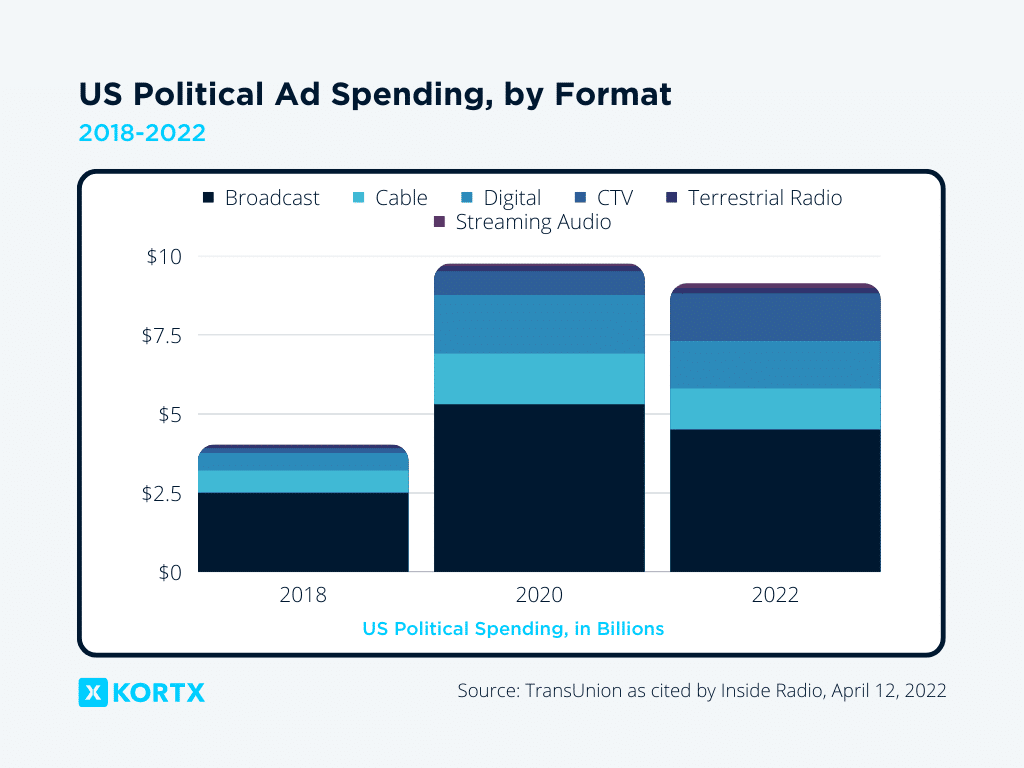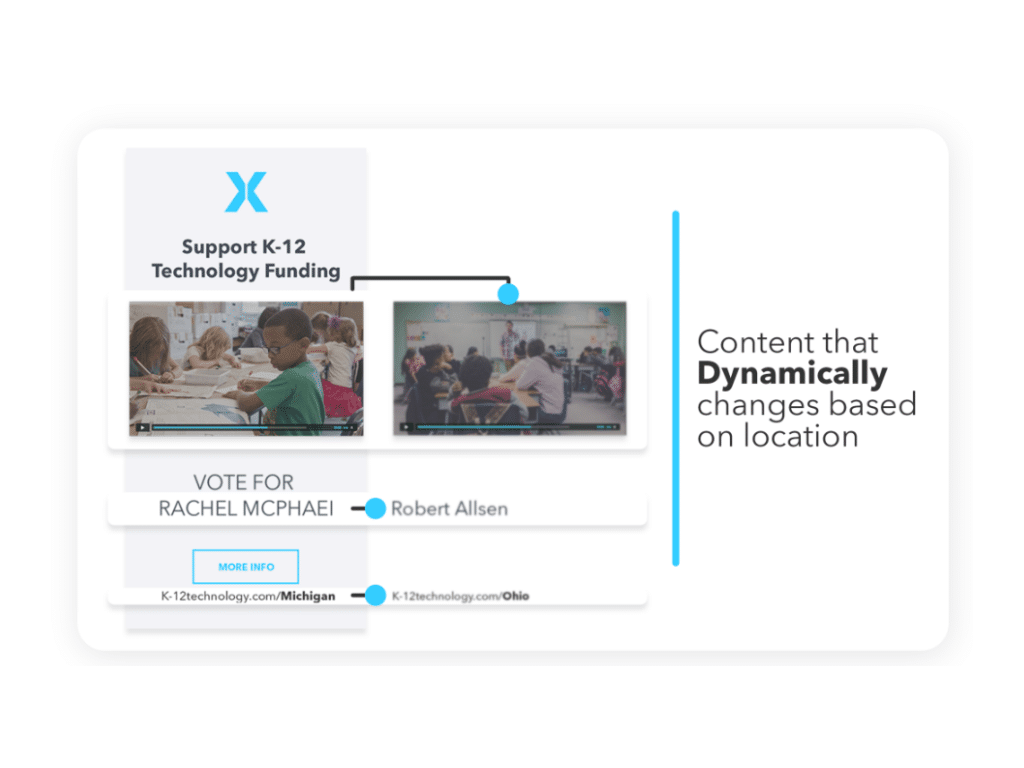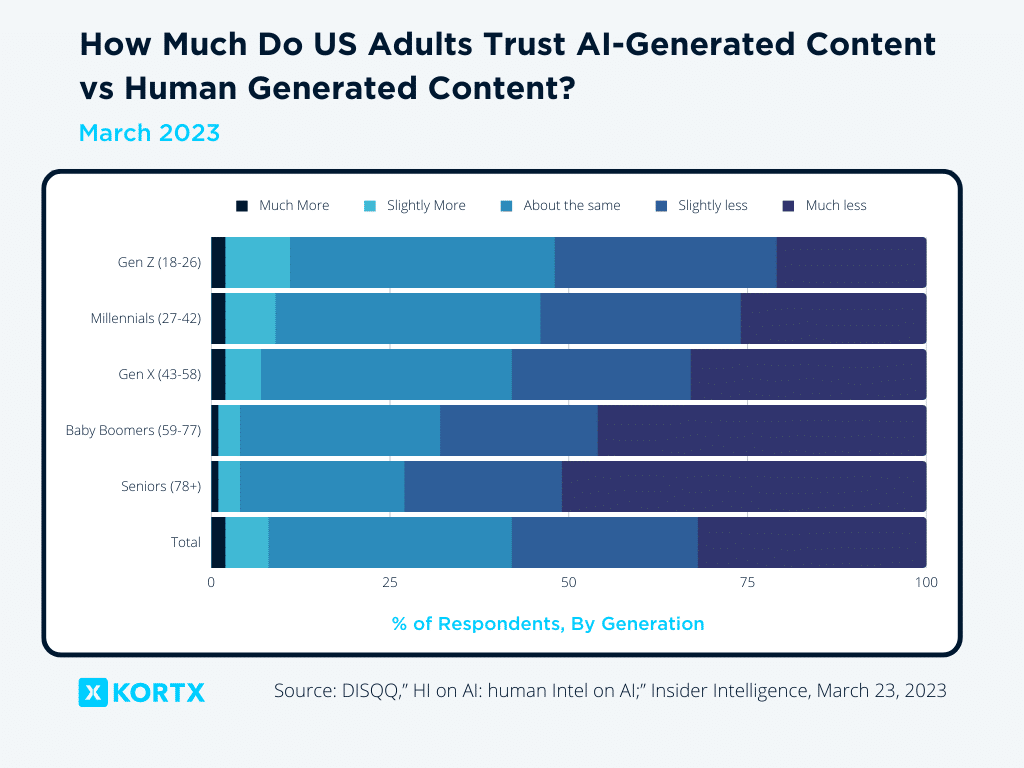Political ad spending may reach $11 billion in 2024, making it the most expensive political ad campaign season to date. With the stakes higher than ever before, candidates are vying for every available platform to convey their messages and rally support.
Gone are the days of relying solely on traditional mediums like television and radio. Political campaigns need to be more agile, data-driven, and personalized than ever before. In this post, we will review 5 key political ad trends shaping the 2024 election season.
1. Programmatic Advertising
The rise of programmatic advertising in the political sphere presents immense opportunities for highly targeted campaigns. By leveraging automated ad buying driven by data-centric algorithms, political advertisers can ensure their ads are delivered to the most relevant audiences at the most opportune time.
Utilizing vast amounts of voter data, programmatic platforms can customize ads to align with specific demographics, online behavior, and personal interests. This optimizes ad spend and fosters a deeper connection between the campaign message and potential voters. Programmatic’s real-time adaptability also allows campaigns to quickly pivot strategies in response to real-time feedback or evolving campaign narratives.
Example: In the 2022 Florida gubernatorial race, a campaign used programmatic advertising to target female voters aged 30-40 interested in educational reform. They tailored the candidate’s ad to highlight their commitment to improving schools, resulting in a noticeable uptick in engagement and support from this demographic.
How is programmatic advertising transforming the way political campaigns target and engage with voters?
“Instead of sending the same message to everyone, campaigns can now talk directly to specific groups of voters. This means voters get messages that are more relevant to them, and campaigns can make sure they’re reaching the right people at the right time. It’s making political advertising smarter, more focused, and thus, more efficient.”
As technology continues to evolve, so will the capabilities of programmatic platforms. The future promises even more refined targeting, broader reach, and increasingly efficient campaign strategies.
Programmatic Streaming Audio is Growing
Political marketers’ programmatic spending on streaming audio has surged 100-fold since early 2020, currently accounting for 4% year-to-date.
2. CTV and OTT
The biggest trend this year is the surge in Connected TV (CTV) and Over-The-Top (OTT), which is projected to account for around 14.92% ($1.4 billion) of all ad spend.
Political Ad Spend for CTV: 2020 vs 2024
Political advertisers increased their spending on CTV devices by 1500% in the first half of 2022 compared with the same period in 2020.
As audiences increasingly opt for streaming services over traditional cable, political advertisers have recognized the need to adapt. CTV and OTT platforms offer unparalleled reach, extending to a variety of devices within a household, from smart TVs to handheld tablets.
And unlike traditional broadcast methods, CTV advertising allows for more granular targeting. It’s not just about reaching a broad audience; it’s about reaching the right one. By analyzing viewer behavior, interests, and even geographical data, political advertisers can craft campaigns that resonate with specific voter groups, ensuring that every ad displayed is as relevant and impactful as possible.
Example: During a California senatorial campaign, parents watching the news on their connected TV received ads about the candidate’s economic and healthcare plans. Meanwhile, advertisers targeted their voting-age teens on their phones, focusing on college affordability and environmental stances, targeting each household member with a tailored ad most relevant to them.

As the general election approaches and campaign budgets grow, ad spending may increase even more. With the dual benefits of expansive reach and targeted engagement, CTV and OTT are shaping political advertising’s future in upcoming election cycles.
Why is CTV a great platform for political advertisers?
“CTV is a great platform for political advertisers for a few reasons.
- We can target by network deal: Want to target females 44+ with children and a family-first focus? We could target a deal with the Hallmark channel, HGTV, and Lifetime. We can also curate deals based on the type of programming specific channels offer to reach that broad audience.
- These are active watchers: They might be sitting down for a binge of a few episodes of the latest true crime show, or a binge of their old childhood standby sitcom. Either way, they’re actively paying attention, and even if they get up during commercials, they’ll still hear your message.
- Diversity can overlap: We can target watchers by ethnicity, language spoken, age, and other demographics and follow them in their watching habits. Be broad or get specific: You identify who you want to vote for you, and we can find them!“
3. Interactive CTV
Interactive CTV ads are transforming the political advertising space in 2024 by not just capturing viewers’ attention but engaging them in a dialogue. These ads encourage direct interaction with the content, turning passive viewing into an active experience.
Interactive CTV Ads Are Highly Engaging
Innovid found that interactive CTV ads drive a 5.42% higher engagement rate compared to a rate of 0.97% for mobile and PC ads.
Political campaigns can integrate TV ads with synchronized digital content for second screens, like smartphones, to amplify reach and engagement across TV and digital platforms. Campaigns can include hashtags, URLs, or QR codes in their TV ads to encourage viewers to engage in real-time discussions or visit campaign websites.

Example: During a race for a local representative, a candidate used an interactive CTV ad showcasing a real-time poll. Viewers could scan a QR code to vote on state priorities like education or healthcare. This led them to the campaign’s site, where they immediately saw the candidate’s proposals for their chosen issue, boosting engagement and providing insights into target voter concerns.
Interactive CTV enables campaigns to bridge the gap between TV and digital platforms, extend their reach, and foster deeper engagement with viewers.
How does the creative aspect of interactive CTV ads change the way campaigns communicate with voters?
“Interactive ads transform one-way messages into engaging conversations. Creative elements like QR codes not only grab attention but also invite active participation, taking them on a journey from TV to mobile. This direct interaction deepens the viewer’s connection to the message, making political campaigns more resonant and memorable.”
4. Advanced Analytics and Measurement
Political campaigns require a deep understanding of their audience for successful messaging and outreach. Advanced analytics and measurement tools now offer political campaigns detailed insights, allowing for data-driven optimizations in ad placements and messaging.
Historically, campaigns relied on limited viewership data and subjective metrics to assess ad performance. However, due to the rise of programmatic advertising, CTV analytics, and other audience measurement tools, campaigns can now delve into the specifics of how their ads perform.
Tools like KORTX’s Axon Audience Manager are pivotal in this transformation. By identifying audience patterns and trends, Axon segments audiences based on various criteria, such as demographics or past voting behavior, allowing for more targeted campaigns.

Axon offers extremely granular data for political advertisers to dissect voter behavior, preferences, and sentiment.
Other platforms like KORTX’s Kampus offer advertisers a comprehensive view of their political campaigns. Through its single interface, users can access dashboard reports, product catalogs, and tailored analytics for tracking. Kampus integrates with Google Ads, Google Analytics, Meta, and Hubspot, offering campaigns deep insights to refine political strategies.
As political landscapes become more complex and voters more discerning, these tools provide campaigns with invaluable insights to address these challenges.
How does KORTX help political campaigns reach the right audience?
“KORTX has access to finely targeted data sets that categorize in political leanings, from “broad” and “leans left/right,” to “Identifies as member of ____ party,” and “___ Party political donor.” Whatever side of the aisle the client is on, we can hyper-target to state, county, congressional district, and even specific ZIP codes to reach the exact audience the client is trying to influence and inspire.”
5. Artificial Intelligence
Amidst the surge in AI-driven political advertising, platforms like Google are intensifying regulations to combat deceptive content. Such measures gain importance as high-profile candidates increasingly employ AI for misleading visuals, intensifying concerns over AI’s potential to sway voters.
Google’s 2024 Political Ad Regulations
Google will require that political ads disclose if they were created using artificial intelligence beginning in November, the BBC reports one year out from the 2024 US presidential election.
Google’s policy already prohibits deep fakes, even as people still debate the use of AI for voice imitation.
Despite this, as political ad spending is set to hit $11 billion in 2024, Google has shown leniency. Recently, YouTube, under Google, reversed a ban on content claiming fraud in the 2020 presidential election.

Setting strict guidelines for AI-driven political ads is critical for gaining ad revenue and guiding ethical AI use in the future.
📚 Related Article: The Definitive Political Advertising Guide: Read our guide to navigate the $11 billion political advertising world, mastering strategies, understanding laws, and gaining insights to stand out in the next election cycle.
How is programmatic advertising transforming the way political campaigns target and engage with voters?
“Programmatic advertising has reshaped political campaigns, offering a sophisticated approach to reaching voters. By leveraging data analytics and automation, campaigns can precisely target specific demographics, delivering tailored messages that resonate with individuals’ interests and values. This transformative technology ensures that political engagement is more relevant, efficient, and responsive to the diverse needs of the electorate.”
2024 Political Campaign Trends: Final Thoughts
As we approach the 2024 elections, political campaigns will increasingly use cutting-edge advertising technologies to connect with voters in more personalized and engaging ways. Amidst this, industry leaders like Google are also contending with the ethical implications that come with the use of AI in shaping public opinion and political discourse.
Political ad spending is on track to be the highest ever in 2024, offering many opportunities for candidates to leverage these platforms to present their policies and engage with voters like never before.
>300 Million Consumer and Voter Profiles
Our database boasts over 300 million user profiles, empowering you to reach voters with timely, tailored messages.
About the Author
Erik Stubenvoll is a Managing Director at KORTX with over 20 years of experience. When he is not learning about his client’s goals, he is on the sidelines with his wife at his daughter’s softball and soccer games or on the golf course.




